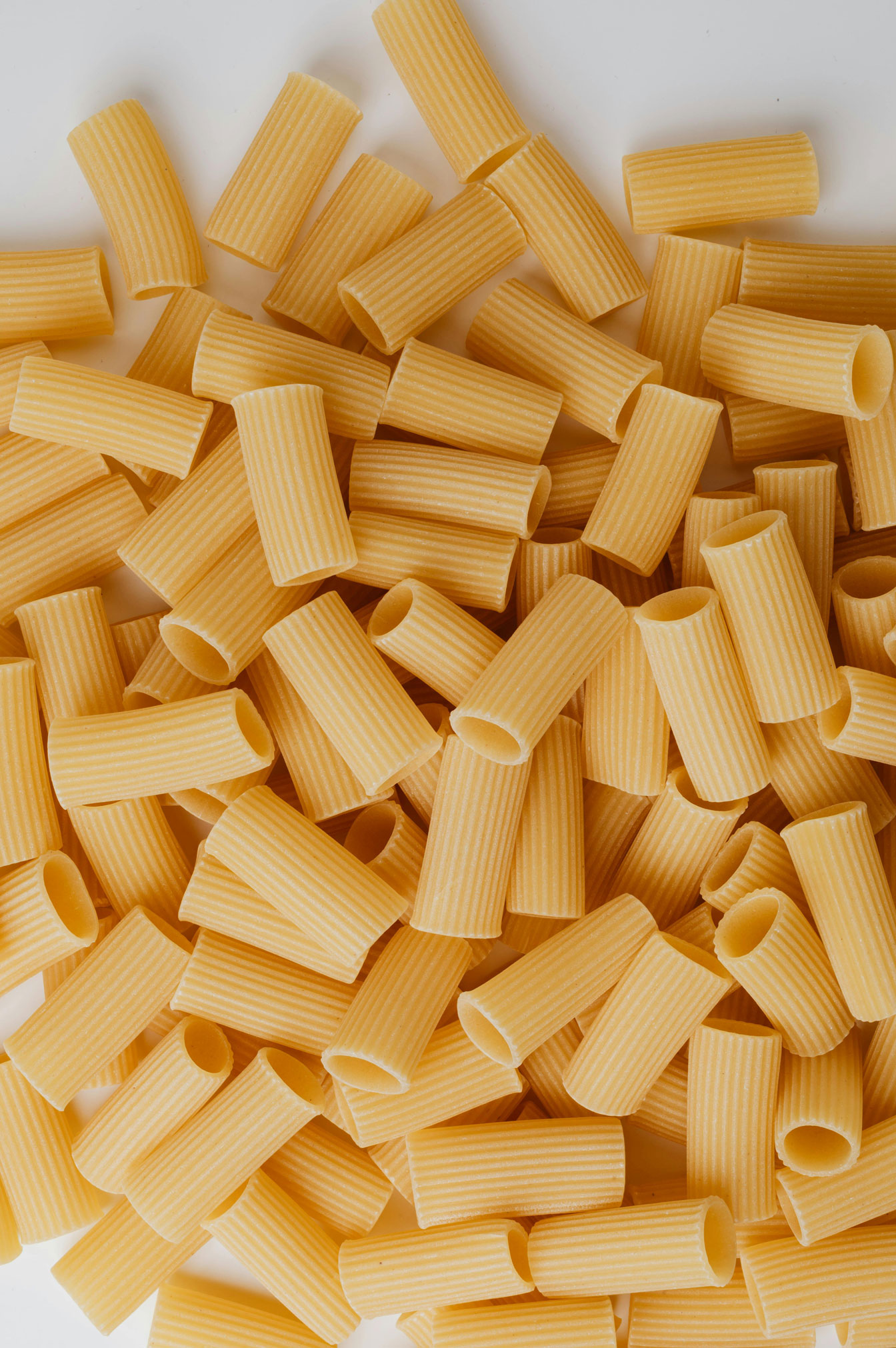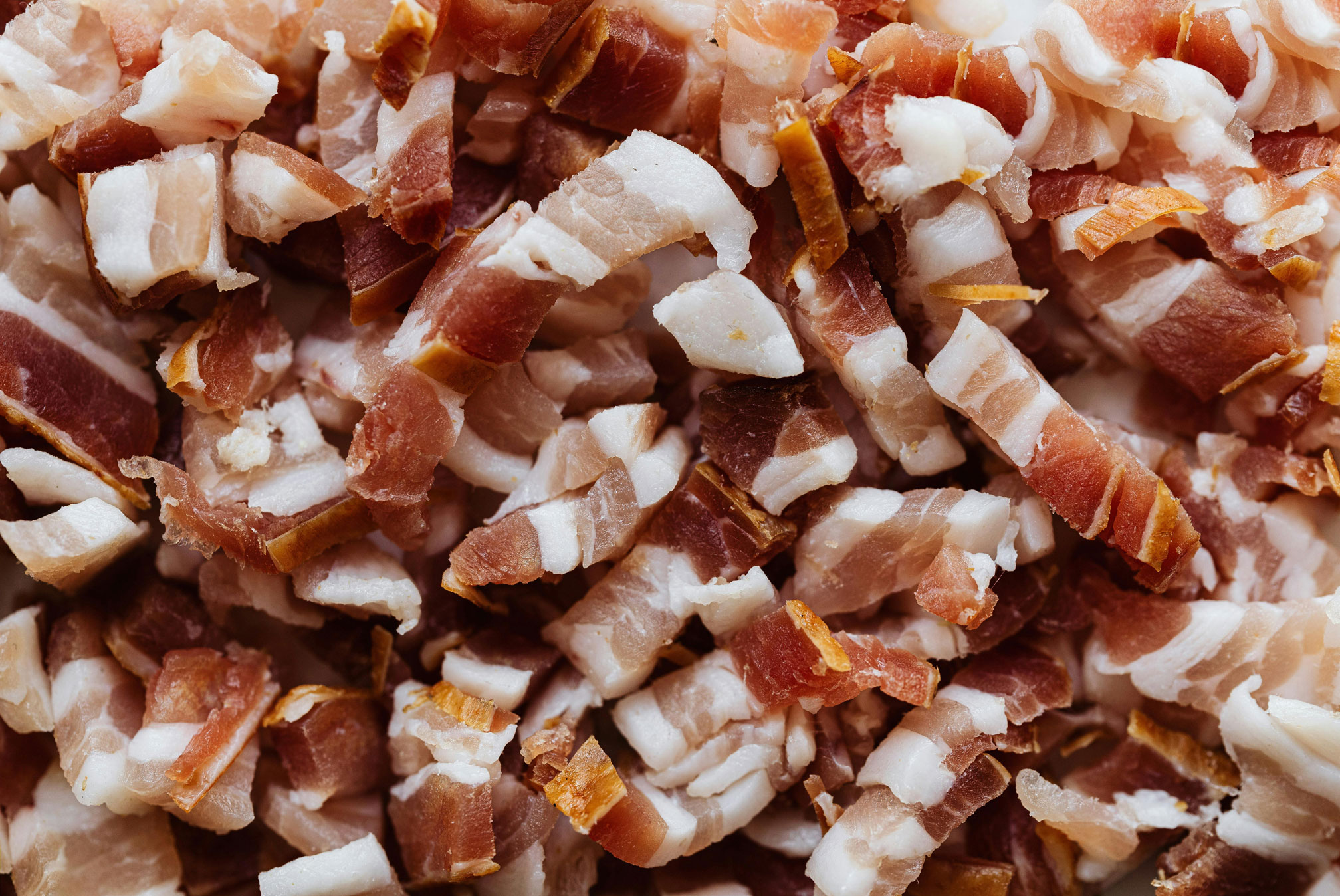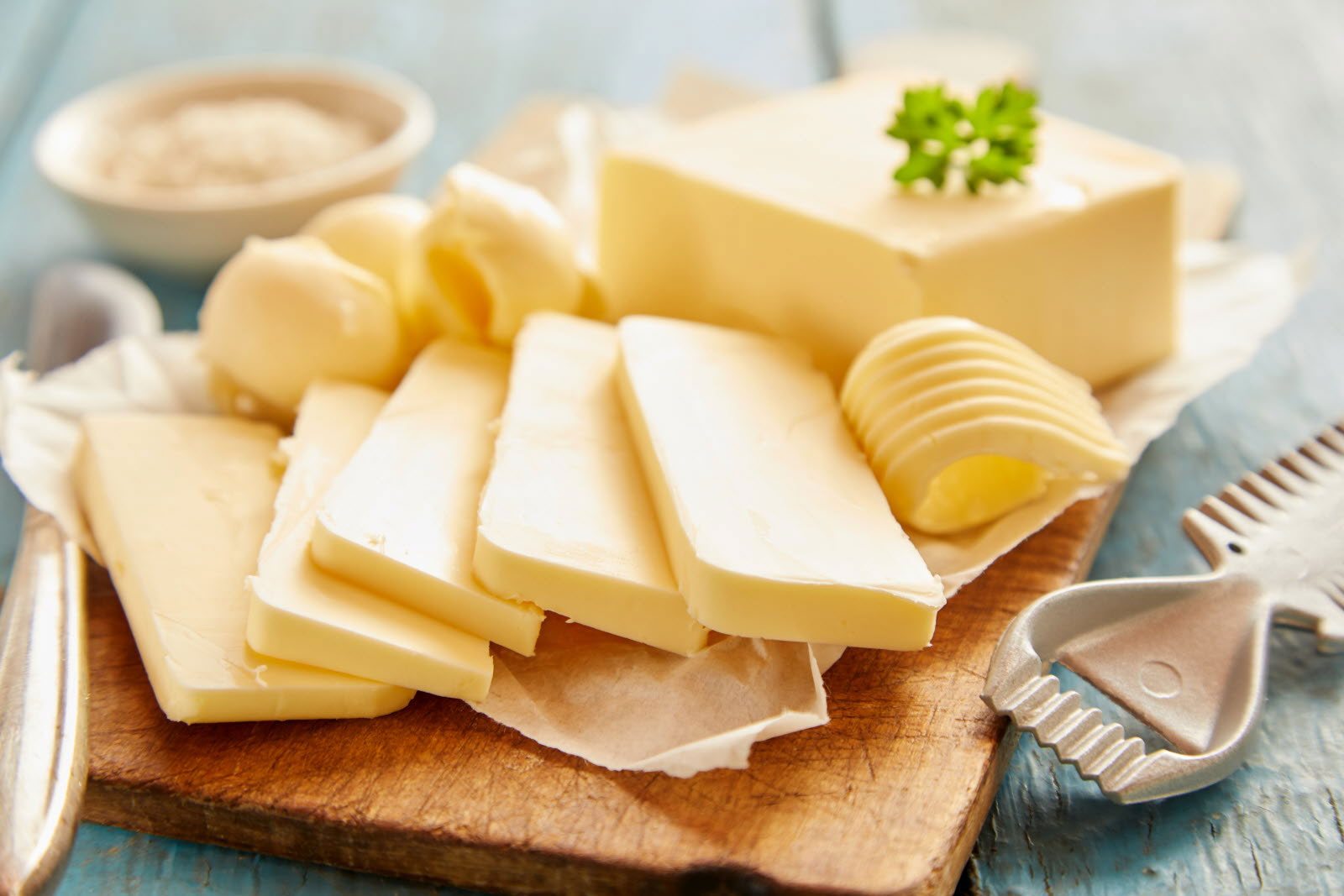Recognising sufficient nutrition’s impact on society and educating ourselves on basic nutrition is important. There are many things the average person experiences in daily life, unaware that nutrition has a lot to do with it, such as how the absence of nutrition can exacerbate symptoms of depression, and the lack of various vitamins and magnesium linked to nutrition deficiencies are key factors in many mood disorders.
In addition to this fact, ironically, the fast-food chains and sugary treats that people describe as ‘happy eating’ are contributing factors to bad moods and mental instability. This is just one of the major factors unhealthy eating can cause. My series will delve into all the aspects and information you need to know to live out a happy and enriched lifestyle.


Key Basic Nutrients
To fully reap the benefits of a nutritious lifestyle, one first needs to understand basic nutrition. We will examine the key basic nutrients: water, carbohydrates, protein, fat, and vitamins.
WATER
Water makes up 45-75% of our bodies and is imperative for our health and nutrition intake. It is the primary component of body fluids and is used in many body processes, including regulating our temperatures, digestion of foods and absorption of necessary nutrients; it aids in the transportation of oxygen and nutrients to cells in the body and plays an important role in detoxification such as kidney functioning and urine reproduction.



Your water intake depends on how much exercise you do, the temperatures and climates you are in, and your body size. The National Academy of Medicine states that the daily intake of water of 9-13 cups is sufficient for healthy men and women, with 1 cup equalling approximately 340ml. Higher amounts are needed for those who regularly exercise; lower amounts are needed for those with smaller body sizes.
To know whether you have suitable hydration, the amount and colour of urine can usually provide a rough indication. Generally, the darker in colour your urine is, the more dehydrated you most likely are. However, certain foods, vitamin supplements, and medication can also change the colour of urine. Smaller amounts of urine may indicate dehydration as well.
CARBONHYDRATES
A common misconception about carbohydrates is that they are inherently unhealthy for the body and should usually be avoided when losing weight; however, although overconsumption of carbohydrates can be unhealthy, this notion is not entirely true. In fact, consumption of carbohydrates is vital as they are the main sources of energy in our bodies.
When observing carbohydrates’ roles, we categorise them into two main groups: simple and complex carbohydrates.
Simple carbohydrates are considered easy to digest and found in sugars combined in a simple chemical structure; examples of simple carbohydrates include sugary snacks, sodas, and white bread. These are utilised for energy, causing a rapid increase in blood sugar and secretion of insulin from the pancreas. When consumed in excess, these are associated with weight gain and other health issues, increasing risks of diabetes, heart disease, and high cholesterol, and are the type of carbohydrate that should generally be avoided where possible to achieve a balanced diet.



Alternatively, complex carbohydrates provide sustained energy and are rich in fibre, vitamins, and minerals. These carbohydrates are bonded together in a more complex chemical structure and are more filling, which helps with portion control and, therefore, weight loss. Fibre and starch are two types of complex carbohydrates; fibre is especially important as it helps control cholesterol and promotes bowel regularity. Examples of complex carbohydrates containing fibre include fruits, vegetables, nuts, beans, whole grains, and legumes. Yep, vegetables and fruits are carbohydrates!
Starch is found in the same food as fibre; it contains calcium, iron, and B vitamins. People assume that carbohydrates containing more starch are more fattening; in contrast to this, they contain fewer than half the calories of fat. Examples of starch-heavy carbohydrates include whole wheat bread, corn, oats, peas, rice, potatoes, and pasta. Complex carbohydrates should be consumed in reasonable portions on a day-to-day basis to provide you with long-lasting energy throughout the day; they are an essential element for athletes to avoid depletion of the glycogen stores, which would result in muscle fatigue and poor performance.

PROTEIN
Protein is one of the most important nutrients for your body and should be consumed daily to maintain, grow and repair your body tissue. To understand the full benefits of protein intake, we must delve into digestion and cellular reproduction processes.
During digestion, the proteins found in foods are broken down into amino acids; the body needs many amino acids to maintain good health. We can find amino acids in animal sources such as meats, milk, eggs, and fish and in plant sources such as soy, beans, legumes, nut butter, and certain grains. Three groups of amino acids can be classified into: essential, non-essential and conditional.
Essential amino acids cannot be created through bodily processes and can only be supplied by food; they should be consumed daily. Examples of essential proteins include eggs, nuts, fish, meat and beans.



Essential amino acids cannot be created through bodily processes and can only be supplied by food; they should be consumed daily. Examples of essential proteins include eggs, nuts, fish, meat and beans.
The body makes non-essential amino acids from essential amino acids or through the process of breaking down proteins.
Conditional amino acids are needed during sickness or stress, usually found in meat, poultry, gelatine, and egg whites.
Many people do not eat enough protein according to their body weight or activity level. To calculate the sufficient amount of protein intake, you measure the grams of protein needed compared to your overall body weight; the recommended protein intake ranges between 0.8g/kg to 1.8g/kg of protein each day; if you are very active, you should be consuming between 1.8g/kg to 2g/kg of protein each day.
Because proteins have a higher thermal effect than that of fat or carbohydrates, your body burns more calories in the digestion process, aiding in weight management; protein is additionally a key component of keratin, collagen, and elastin, which are essential for healthy hair, nails and skin. Protein is crucial for building and repairing muscle tissue if you are an athlete or exercise regularly.
FAT
Fat is the most concentrated energy source, doubling the calories per gram. Fat is used to store extra calories for later use when needed. Although negative connotations are attached to consuming fat, not all consumption is bad and is vital for a nutritious diet. Fat provides your body with a source of energy; when your body is deprived of energy, it breaks down stored fat into usable energy, which is a fundamental resource for fasting periods or low carbohydrate intake. Fat helps maintain body cells as they are major cell membrane components. Fats are also essential for absorbing fat-soluble vitamins, such as A, D, E and K.
Without adequate fat intake, your body cannot effectively absorb these crucial vitamins. Fats such as omega-3 fatty acids contain various anti-inflammatory elements that aid in reducing inflammation and can additionally decrease the risk of contracting chronic diseases like heart disease and arthritis. However, too much saturated fat consumption can raise your cholesterol level and increase your risk of heart disease.
Foods containing omega-3 fatty acids include walnuts, Brussels sprouts, seeds, egg yolk, fish and spinach. Fat-containing foods should be incorporated into your diet to achieve a nutritious lifestyle.
On the other hand, saturated fats in food such as: cream, cheese, butter, ice-cream, baked & fried foods and palm oil, although still healthy in moderation, should be consumed less regularly.
Fats are essential for the body. However, there are many risks that stem from the overconsumption of fats, especially trans-fats and saturated fats. Excessive fat consumption can increase risks of obesity, coronary heart-disease and certain cancers. In 2002, the joint WHO/FAO expert consultation recommended that the consumption of saturated fats should be less than 10% of a person’s total energy consumption to avoid these risks.
Cancers caused by fat overconsumption include breast cancer – studies suggest that fat can influence hormone levels, especially that of post-menopausal women, therefore causing breast cancer. Colon and Rectal cancer can be a result of fatty processed foods as high fat intake increases bile acid production, which stimulates colorectal cancer development. These are just a few of the many risks of fat overconsumption. The most important factor when incorporating fat into your diet is proportion; as long as you have a balanced fat intake compared to everything else, it is healthy.

VITAMINS
Vitamins are organic compounds our bodies use in small amounts for various metabolic processes. In essence, they keep us healthy and aid in body functioning. Vitamins are required from the food we consume. Vitamins and minerals are known as micronutrients; although micronutrients don’t directly give us energy, they allow us to successfully receive energy from fat, protein and carbohydrates, which we call macronutrients.
There are 13 vitamins in total, in which eight are derived from the B-Group of vitamins. Let us observe the different types of vitamins and their key importance in our lifestyles. Vitamin A: vitamin A is essential for protecting the immune system by fighting disease or infections found in the body; it also helps in skin health and is often found in many retinoids, improving discoloration, skin flexibility, and preventing wrinkles. Another benefit of vitamin A consumption includes improved vision as it’s responsible for forming the photoreceptor rhodopsin and supports the functioning of the conjunctival membranes and cornea.
The lack of vitamin A can cause many vision issues, including severe conditions such as corneal degeneration. Vitamin B is vital for harvesting energy in carbohydrates, fat and protein. They are often needed to help in cell multiplication by making new DNA. Vitamin B cannot be stored within the body; it has to be regularly consumed within your diet; recommendable foods for sufficient vitamin B intake include fish, lean meat, & whole grains such as chicken breast, ground beef, shrimp, cod, pork chops, brown rice, oats, and quinoa.
Vitamin C is a very essential component within the body, this vitamin cannot be manufactured by the body using other sources and cannot be stored for long. Vitamin C enters the body through foods and drinks such as citrus fruits, orange juice, peppers, strawberries, broccoli, Brussels sprouts and potatoes. There are multiple metabolic processes Vitamin C is used for collagen formation – collagen is used in multiple bodily processes, and its main role is to strengthen bone, skin & blood vessels.


Antioxidant function – antioxidants are used to destroy damaging molecular compounds known as ‘free radicals’; vitamin C and vitamin E are prominent antioxidants. Other processes Vitamin C aids in include iron absorption and infection-fighting. Studies prove that adults require around 45 mg of vitamin C daily to achieve a healthy and balanced diet; a lack of vitamin C can lead to diseases such as scurvy and serious health conditions.
Vitamin D is usually acquired through UV radiation and is important for maintaining strong bones, muscles and overall health. Regular physical activity aids in the body’s Vitamin D production. The average person should spend at least 10-30 minutes in direct sunlight per day between 10 am and 3 pm; if you are located further from the equator and don’t experience much sunlight, you may need to consume Vitamin D-rich foods and supplements.
Finally, Vitamin K is vital to maintaining healthy bones and preventing blood clot. We get vitamin K from the gastrointestinal tract bacteria; we get most vitamin K from food such as leafy green vegetables, fruits and various vegetable oils.
Myths Busted
– misinformation, false advertising in food and drink brands. –
One of the biggest dangers to health and well-being today’s society is the false advertising of mainstream brands that supposedly promote nutrition and healthy lifestyles. Many of these products are advertised to make you falsely believe that they benefit your life in some way, whether it’s to increase energy, aid in weight loss, build muscle mass, or help you ‘fit in’ with an infinite beauty standard. Many of these products can be harmful and useless to your body/health. Here are some examples of products that are either advertised falsely as ‘healthy’ or are advertised without warning consumers of the harmful consequences.

Energy drinks – RedBull
There have been multiple controversies around certain energy drinks, a prime example being Red Bull. Red Bull is ranked one of the most popular energy drinks in the world; it is marketed to enhance performance and boost energy levels. However, it does not warn consumers of its harmful effects on the body and how unhealthy it is.
Before we delve into the detrimental consequences, let’s evaluate some of the ingredients found in a singular can of Red Bull. Ingredients such as 80mg of caffeine, approximately equivalent to two full cups of coffee, artificial flavours, and colours have side effects such as headaches, chest pain, dizziness, and fatigue in the short term.

Antioxidant function – antioxidants are used to destroy damaging molecular compounds known as ‘free radicals’; vitamin C and vitamin E are prominent antioxidants. Other processes Vitamin C aids in include iron absorption and infection-fighting. Studies prove that adults require around 45 mg of vitamin C daily to achieve a healthy and balanced diet; a lack of vitamin C can lead to diseases such as scurvy and serious health conditions.
Think of all the things we use sugar in, such as a cup of tea/coffee, flavouring in cooking, fruit, bread, cereal, canned food and many more foods and drinks consumed daily. One can of Red Bull is almost equal to the amount of sugar found in all of these various products combined. In addition to all of these daily products, it works out to be well above the maximum recommended amount of sugar daily consumption. Although sugar-free Red Bull does exist, it contains artificial sweeteners, aspartame and acesulfame K, which are very harmful and are known to cause increased risks of illnesses such as type 2 diabetes.

In the long term, it can cause an increased risk of cancer, according to the International Journal of Occupational and Environmental Health, as well as brain damage, causing changes in neurotransmitters within the brain and, as a result, potentially leading to hyperactivity disorder (ADHD) in children. Sodium bicarbonate, sodium bicarbonate is a white, crystalline powder that is usually used as a PH buffering agent, topical cleansing solution, and a systemic alkaliser; although it is not specified exactly how much sodium bicarbonate is found in Red Bull, it is estimated that about 200mg is consumed through 1 can of Red Bull.
Sugar there are exactly 27 grams of sugar found in 1 250ml can of Red Bull, which is equivalent to 7 teaspoons of sugar per can. The American Health Organisation recommends that maximum daily sugar consumption should be nine teaspoons for men and six teaspoons for women.


What are some consequences of being a regular Red Bull consumer?
Due to Red Bull’s large caffeine content, it can cause a significant rise in blood pressure and heart rate, directly increasing the risks of heart disease. Many studies suggest that consuming one can of Red Bull can increase blood pressure and heart rate levels within only 90 minutes and can last up to 24 hours. Due to this, excess consumption of Red Bull, especially in those who are younger or have higher blood pressure, can result in many problems, such as abnormal heart rhythm, heart attacks and subsequent death.
Besides the obvious health concerns, it can also severely damage the enamel in your teeth, making them susceptible to cavities and decay due to the high acid and sugar levels. When enamel is damaged, it makes your mouth very prone to bacterial infections and bleeding of the gums, causing severe dental issues for the rest of your life. If you do occasionally drink Red Bull, it is recommended to rinse your mouth out afterwards to avoid the spread of acid around your entire mouth.
It is important to note that the occasional intake of Red Bull is not directly harmful to the body. However, regular consumption does cause detrimental side effects; there are multiple cases of deaths suggesting that Red Bull was the root cause.
The family of a healthy and athletic 33-year-old man, Cory Terry, sued Red Bull for $85 million, insisting that Red Bull was the cause of his death after he was said to be playing basketball with his friends and took a break in which he drank a can of Red Bull, soon he had suddenly collapsed and had to be rushed to hospital. He was later pronounced dead from a condition called idiopathic dilated cardiomyopathy, which is a term that describes when the heart simply stops beating.
In 2009 a federal study discovered that 13,000 emergency room visits within that year were to do with the consumption of Red Bull. Another case includes a 16-year-old named Davis Cripe, a boy who was very much against alcohol and drugs and didn’t drink energy drinks regularly. On the 26th of April 2017, he allegedly chugged a Red Bull before entering a class; shortly after, his heart went into arrhythmia, and 10 minutes later, he was pronounced dead. His family are now working towards trying to get Red Bull to implement an age limit of 18 years old to avoid any other children being harmed.
These are just two death cases of thousands that Red Bull has contributed to. To find out more about these cases and other cases, visit: https://l1nq.com/afCYP
Magarine
Margarine is a spread usually used for baking, flavouring, and cooking as a substitute for butter. Margarine was originally made from mostly animal fats and oil, but most margarine is now made from vegetable oils. There are many controversies around the health concerns margarine poses while actively being advertised as a healthier alternative to butter.
Not only is margarine terrible for your health but it is furthermore advertised as the opposite. A brand of margarine known as ‘Promise’ was forced to sign an agreement with the Federal Trade Commission to settle charges of national heart concerns experienced by margarine consumers. The campaign used the slogan, “Get Heart Smart”, while showing hearts on all of the products to advertise the supposed incredible heart and health benefits. They produced multiple adverts falsely claiming to be low-fat, making consumers believe that they were not only using a healthier alternative to butter but benefiting their hearts through the consumption of ‘Promise’. These advertisements were particularly dangerous, resulting in around 222.1 million Americans consuming Margarine in 2011 and developing many health concerns as a result.



What exactly makes margarine such a health risk?
Margarine contains many fats such as saturated fats, monounsaturated fats and polyunsaturated fats; one block of margarine contains roughly 60% fat, making it exceptionally unhealthy and excess consumption causes diseases such as cardiovascular disease, some cancers, and coronary heart disease. Margarine is a processed food produced to taste and look like butter; as mentioned, because it is meant as an alternative, margarine is largely produced from vegetable oils; the problem lies in the chemical structural changes the vegetable oil goes through to achieve the right form. These structural changes are done through high heat, high pressure, hydrogen gas and a metal catalyst, producing very toxic chemicals. Many Margarines additionally use trans-fats and hydrogenated oils, which are not only destructive to the heart but result in conditions such as heart attacks, strokes and type 2 diabetes.
The best solution would be to completely cut margarine out of your diet as it will eliminate any of these problems mentioned. However, if you do decide not to cut margarine out of your diet but simply cut down on it, it’s important to know that although any margarine should not be consumed in excess, there are margarine brands that are healthier than others it is important to know which brands you should buy to limit the health risks. Different recipes depict different amounts of saturated fats, vitamins and salt. To understand which recipes are best, you should always choose soft or liquid margarine, as the more solid a stick of margarine, the more saturated fats can be found. Additionally, look for a spread with less than 10% of the daily value for saturated fats and spreads with the least amount of salts.
Nutrition & Mental Health
Due to the constant activity of your brain, it needs to be fuelled sufficiently by the foods and drinks you consume. The food you eat directly affects the functions and structures of your brain. The right nutrition is essential for your mental health and moods, reflecting the outcome of many activities we participate in.
The Importance Of Mental Health
When we discuss mental health, we refer to our psychological, emotional, and social wellness. It depicts how we think, act and feel, determining how we manage stress and make healthy choices in life. More than 1 in 5 US adults have mental illnesses, and more than 1 in 5 children from 13-18 suffer from very debilitating mental illnesses. These illnesses are a huge danger within society, causing serious problems such as increased suicide rates, substance abuse, homelessness, unnecessary disability and inappropriate incarceration. Although nutrition is not always the primary cause of these illnesses, it contributes largely to their betterment or worsening.
Effects Of Poor Nutrition Intake
Depression, particularly, is known as one of the most common mental illnesses in society. Studies show that illnesses such as depression are largely due to or exacerbated by poor nutritional intake. Deficiencies in nutrients such as B vitamins, proteins, magnesium, iron, calcium, vitamin D, and omega-3 fatty acids can result in many depressive symptoms, leading you to believe you are depressed.
Studies conducted by the NIH concur that a healthy diet can drastically improve mental health as well as prevent depression occurrence. Considering the role nutrition plays in depression, it could potentially prevent primary and secondary stages of depression. Nutrition is also a huge contributor to stress and anxiety. Low-nutrition, high-calorie foods can increase stress levels immensely as they contain substances that cause additional problems on top of stressful events.
Foods that contain added sugar and refined carbohydrates, such as cakes, fizzy drinks and cookies, increase blood sugar levels that your body is then forced to regulate through extra insulin production and, in addition, cause a crashing period that affects other hormones within the body. This leads to a cortisol increase – the main stress hormone. Fried foods are high in trans fats; they negatively affect your stress levels due to the inflammation they cause. Inflammation disrupts chemical balances in your brain and the dopamine and neurotransmitter serotonin. Overeating these foods contributes to stress as your body has to work harder to break down these substances, which could lead to lepton resistance when your body can no longer warn you of when you’re full.

How Good Nutrition Positively Affects Your Mental Health
Suitable calorie intake derived from many sources, such as fats and carbohydrates, ensures that your brain receives sufficient energy needed to function properly. Increasing protein consumption also helps in the production of neurotransmitters and, as a result, promotes better moods. Eating antioxidant-rich fruits and vegetables will also enhance cognitive function, protecting the brain cells from potential damage.
Consuming B6 and B12 vitamins that can be found in legumes and eggs support brain function and memory. Furthermore, sufficient nutrition provides a healthy supply of glucose to the brain, which improves concentration and focus and prevents fatigue. All these factors together allow you to maintain good mental health and work ethic, preventing or aiding in any issues such as depression, ADHD and anxiety.
Your Ideal Meal
It is always difficult to improve your nutrition and live a healthy lifestyle when you don’t know where to start. In modern-day society, it is very easy to find information telling you what’s good and bad, to the point at which there are too many contradictions to know what you should pursue. This can make one feel overwhelmed and confused and subsequently give up on the idea of improving one’s lifestyle. That is why knowing how to build a meal plan is so important and much easier than you might think.
First and foremost, before we build a meal plan, you should have a basic idea of the USDA Food Pyramid. This is a figurative pyramid comprising of the six food groups: grains, vegetables, fruits, meat/beans/nuts, dairy and fat/oils/sweets. It is suggested that the average person should consume around four servings of grains daily, a higher fruit and vegetable intake being around 5 cups per day, a moderate dairy intake of 3 cups daily, a higher meat and bean intake of 6.5 oz daily, and around seven teaspoons of fats or oils.
The meals you consume in a day largely depend on your situation and your activity. Therefore, we separate meals into three categories: an ‘Anytime Meal’, a ‘Post Workout Meal’, and a ‘Plant-based Meal’.
An ‘Anytime Meal’ is usually recommended for those who don’t exercise regularly or for those who do exercise – in which case, they’d eat these meals for every meal outside the post-exercise period. This meal comprises 25% protein, including red meat, chicken, fish, eggs, or a vegetarian source. 60% veggies, including any wide variety of vegetables. 15% fats, including healthy oils, nuts and seeds. And lastly, a drink of your choice, such as water or tea. To fully optimise the effects of this nutritious diet, it is important to ensure you eat slowly and stop eating when you’re 80% full; choose mostly whole foods with minimal processing; consume organic foods; and use smaller or larger plates based on your body size. This particular meal is loaded with nutrient-dense, high-fibre, low-calorie vegetables. The protein helps with portion control, maintaining lean mass, and improving metabolism.
A’ Post-Workout Meal’ is usually recommended for those who participate in regular, intense activity; these meals should preferably be eaten soon after the intense exercise sessions to fully optimise one’s abilities. This meal comprises of 50% protein, including red meat, chicken, fish, eggs or a vegetarian source. 50% veggies and fruit, including various vegetables and some fruit. A small side portion of starches, including potatoes, pasta, rice or bread. And lastly, a drink of your choice, such as water or tea. To optimise the effects of these meals, it is important to ensure that the largest meal of your day is after exercise, to eat more vegetables than fruits in this meal, choose whole foods with minimal processing, consume organic foods, and use smaller or larger plates based on your own body size. This plate is very effective as it helps us take advantage of the body’s metabolic response to exercise, which subsequently helps build muscle and strength. This meal has little fat because it slows digestion and assimilation of protein and carbohydrates.
A ’Plant-based Meal’ is recommended for those who prefer not to consume meat. With a wide variety of non-starchy vegetables, a good protein source and healthy fat, a plant-based diet can have the equivalent effects of an ‘Anytime Meal’. The “Plant Based Meal’ is made up of 50% veggies, including a vast variety of non-starchy vegetables, 25% protein, including foods such as legumes and beans, 10% fats, including healthy oils, nuts and seeds, 15% starches including sweet potatoes, potatoes, whole grains, and bread and lastly a drink of your choice such as water or tea. To optimize the full benefit of this meal, it is important to ensure you eat slowly and stop eating when you’re 80% full; choose mostly whole foods with minimal processing; consume organic foods; and use smaller or larger plates based on your body size.
These meals are great guides when looking for a place to start. Using these proportions will ensure you consume the correct amount of nutrients per food group and improve your health and well-being.




Consumption Awareness
To end my series, I will be delving into simply being aware of what you eat daily. Although it sounds easy enough, most of us are completely blind to the kinds of foods we put in our bodies, having awareness will aid in becoming a healthier person and remind you of the subconscious, so healthy habits you possess.
The first step to achieving self-awareness is listening to your body and acknowledging any symptoms or signals experienced when consuming certain foods. It is important to recognise any dietary restrictions, such as being lactose or gluten intolerant, and build your meals based on what you know you can eat. There are many methods you can use to fully understand how much nutrients you feed your body.
When eating your daily meals, make sure you are not eating with any distractions in front of you, such as the TV, cell phones or any kind of stimulants; this will help you notice what you’re eating as most subconscious eating is done while partaking in these sorts of activities.
Food journaling is a great way to keep track of your daily meals and snacks, this can help you identify patterns, recognise emotional eating triggers, and control your portions. Reading nutrition labels is more important than one would think; knowing what you’re consuming is vital. This includes ingredients such as fats, sugars, sodium and calorie intake. Lastly, meal planning is a great method to use when trying to achieve good eating and more awareness, as it requires you to think carefully about the meals you choose ahead of time; this also helps in portion control, preventing overeating and mindless snacking. Lastly, it tracks your nutrients, meaning you will likely have a more balanced and nutritious daily diet.


Healthy and interesting recipes
Looking for healthy and interesting recipes? Here are a few recommendations that will make you fall in love with healthy eating.
Salads
Spicy Asian Cucumber Salad
Avocado salad
Mediterranean Tuna Salad
Antipasto Chickpea Salad
Israeli Couscous Salad
Mega Italian Salad
Vegetarian Pasta Salad
Mexican Corn Salad
Green Papaya Salad
Full meals
One Pot Creamy Tomato Beef Pasta
Crispy Pork Belly Banh Mi
Golden Coconut Chicken Curry
Cheesy Mexican Beef Bean Bake
One Pot Mexican Chicken Rice
Chilli Lime Fish
Coq Au Vin
Prawn Stir Fry
Thai Cashew Chicken Stir Fry
Snacks
Rhubarb Bran Muffins
https://www.taste.com.au/recipes/rhubarb-bran-muffins/9c790e34-066e-4b6e-94e4-d658c9623f8e?r=recipes/ijc8m8t
Broc-Tots
https://www.taste.com.au/recipes/broc-tots-recipe/ayqw4f6k?r=recipes/ijc8m8ti
Apricot Sesame Spice Balls
https://www.taste.com.au/recipes/apricot-sesame-spice-bliss-balls/0GlY8t8l?r=recipes/ijc8m8ti
Apple Doughnuts
https://www.taste.com.au/recipes/apple-doughnuts/28lijz9r?r=recipes/ijc8m8ti
Roasted Carrot Bean Dip
https://www.taste.com.au/recipes/roasted-carrot-bean-dip/c4rq6tkh
Banana Sultana Bran-Coconut Muffins
https://www.taste.com.au/recipes/banana-sultana-bran-coconut-muffins/4625bd61-ea6e-4907-bf88-9f96b8bb16d0?r=recipes/ijc8m8ti
Dark Chocolate Gluten Free Muesli Bars
https://www.taste.com.au/recipes/sesame-dark-chocolate-gluten-free-muesli-bars/52a5f6d4-bef8-4747-b361-87e96d03e68c
Date Apricot Chia Bliss Balls
https://www.taste.com.au/recipes/date-
apricot-chia-bliss-balls/5a4610d8-5580-4bc6-b8e7-677fbcb6402c?r=recipes/ijc8m8ti
Curtis Stones Egg Bites
https://www.taste.com.au/recipes/curtis-stones-egg-bites-kale-fetta-recipe/afscl81p
Sources
Basic nutrition:
Eat smart, Move more (2019). The Six Basic Nutrients. [online] Virginia Family Nutrition Program. Available at: https://eatsmartmovemoreva.org/the-six-basic-nutrients/#:~:text=There%20are%20six%20 major%20 nutrients.
Harvard School of Public Health (2019). Water. [online] The Nutrition Source. Available at: https://www.hsph.harvard.edu/nutritionsource/water/.
Holesh, Julie E., et al. “Physiology, Carbohydrates.” PubMed, StatPearls Publishing, 2021, www.ncbi.nlm.nih.gov/books/NBK459280/#:~:text=Simple%20Carbohydrates%3A%20One%20or%20two.
Cherney, Kristeen. “Simple Carbohydrates vs. Complex Carbohydrates.” Healthline, Healthline Media, 30 Mar. 2015, www.healthline.com/health/food-nutrition/simple-carbohydrates-complex-carbohydrates#complex-carbs.
Medline Plus. “Protein in Diet: MedlinePlus Medical Encyclopedia.” Medlineplus.gov, 2022, medlineplus.gov/ency/article/002467.htm#:~:text=Every%20cell%20in%20the%20human.
NHS. “Facts about Fat.” NHS, 14 Apr. 2023, www.nhs.uk/live-well/eat-well/food-types/different-fats-nutrition/.
World Health Organization. “Fat Intake.” Www.who.int, World Health Organization, 2023, www.who.int/data/gho/indicator-metadata-registry/imr-details/3418#:~:text=Excessive%20dietary%20fat%20intake%20has.
Services, Department of Health & Human. “Vitamins and Minerals.” Www.betterhealth.vic.gov.au, 8 July 2022, www.betterhealth.vic.gov.au/health/healthyliving/Vitamins-and-minerals#.
webmd. “Vitamin A: Uses, Side Effects, Interactions, Dosage, and Warning.” Www.webmd.com, www.webmd.com/vitamins/ai/ingredientmono-964/vitamin-a.
“Vitamin a Beneficial for Eyes, Just Not for Preventing Myopia.” Www.aoa.org, www.aoa.org/news/clinical-eye-care/health-and-wellness/vitamin-a-good-for-the-eyes?sso=y.
NHS. “Vitamin c – Vitamins and Minerals.” NHS, Crown Copyright, 3 Aug. 2020, www.nhs.uk/conditions/vitamins-and-minerals/vitamin-c/.
“14 “Health Foods” That May Not Be as Nutritious as You Thought.” Healthline, 1 July 2020, www.healthline.com/nutrition/junk-health-foods#4.-Sports-drinks-and-energy-beverages.
“What Are the Side Effects of Drinking Red Bull?” Healthline, 16 Sept. 2019, www.healthline.com/nutrition/red-bull-side-effects#bottom-line.
“The Dangers of Artificial Flavors – What You Need to Know.” WICKED Protein, 13 Mar. 2024, www.wickedprotein.com/blogs/nutrition/the-dangers-of-artificial-flavors.
PubChem. “Sodium Bicarbonate.” National Library of Medicine, PubChem, 2019, pubchem.ncbi.nlm.nih.gov/compound/Sodium-bicarbonate.
“Sodium Bicarbonate (Oral Route, Intravenous Route, Subcutaneous Route) Proper Use – Mayo Clinic.” Www.mayoclinic.org, www.mayoclinic.org/drugs-supplements/sodium-bicarbonate-oral-route-intravenous-route-subcutaneous-route/proper-use/drg-20065950.
https://realityhouse.co.uk, realityhouse-. “The Effects of Energy Drinks on Your Teeth.” Dental Negligence Team, 28 Nov. 2018, www.dentalnegligenceteam.co.uk/blog/the-effects-of-energy-drinks-on-your-teeth/.
https://www.facebook.com/FrenkelandFrenkel. “Frenkel Firm.” Frenkelfirm.com, 2024, www.frenkelfirm.com/blog/family-of-man-who-died-after-drinking-red-bull-sites-default-files-lawsuit/. Accessed 2 Oct. 2024.
“Promise Margarine’s “Get Heart Smart” Campaign Targeted in FTC Deceptive Advertising Case.” Federal Trade Commission, 7 Nov. 1996, www.ftc.gov/news-events/news/press-releases/1996/11/promise-margarines-get-heart-smart-campaign-targeted-ftc-deceptive-advertising-case. Accessed 2 Oct. 2024.
Centers for Disease Control and Prevention. “About Mental Health.” Centers for Disease Control and Prevention, U.S. Department of Health & Human Services, 16 Apr. 2024, www.cdc.gov/mentalhealth/learn/index.htm.
Zielińska, Magdalena, et al. “Dietary Nutrient Deficiencies and Risk of Depression (Review Article 2018–2023).” Nutrients, vol. 15, no. 11, 23 May 2023, pp. 2433–2433, https://doi.org/10.3390/nu15112433.
The Power of Self-Awareness for Better Health – Hunter Health. 28 Sept. 2023, hunterhealth.org/the-power-of-self-awareness-for-better-health/.
Images:
“The Great Butter vs Margarine Debate! – Cafe Flava.” Cafeflava.co.za, 19 Jan. 2019, www.cafeflava.co.za/2019/01/19/the-great-butter-vs-margarine-debate/. Accessed 4 Oct. 2024.
“U.S.: Usage of Margarine / Margarine Spread 2011-2024.” Statista, www.statista.com/statistics/280759/us-households-usage-of-margarine-margarine-spread-trend/.
World Health Organization. “Obesity: Health Consequences of Being Overweight.” Www.who.int, 1 Mar. 2024, www.who.int/news-room/questions-and-answers/item/obesity-health-consequences-of-being-overweight
Selhub, Eva. “Nutritional Psychiatry: Your Brain on Food .” Harvard Health Blog, Harvard Health Publishing, 18 Sept. 2022, www.health.harvard.edu/blog/nutritional-psychiatry-your-brain-on-food-201511168626.
Alexander, Heather. “8 Foods That Impact Stress.” MD Anderson Cancer Center, 24 Mar. 2021, www.mdanderson.org/cancerwise/8-foods-that-impact-stress.h00-159459267.html.
McLean Hospital. “Diet, Nutrition & Mental Health | McLean Hospital.” Www.mcleanhospital.org, 24 May 2024, www.mcleanhospital.org/essential/nutrition.





